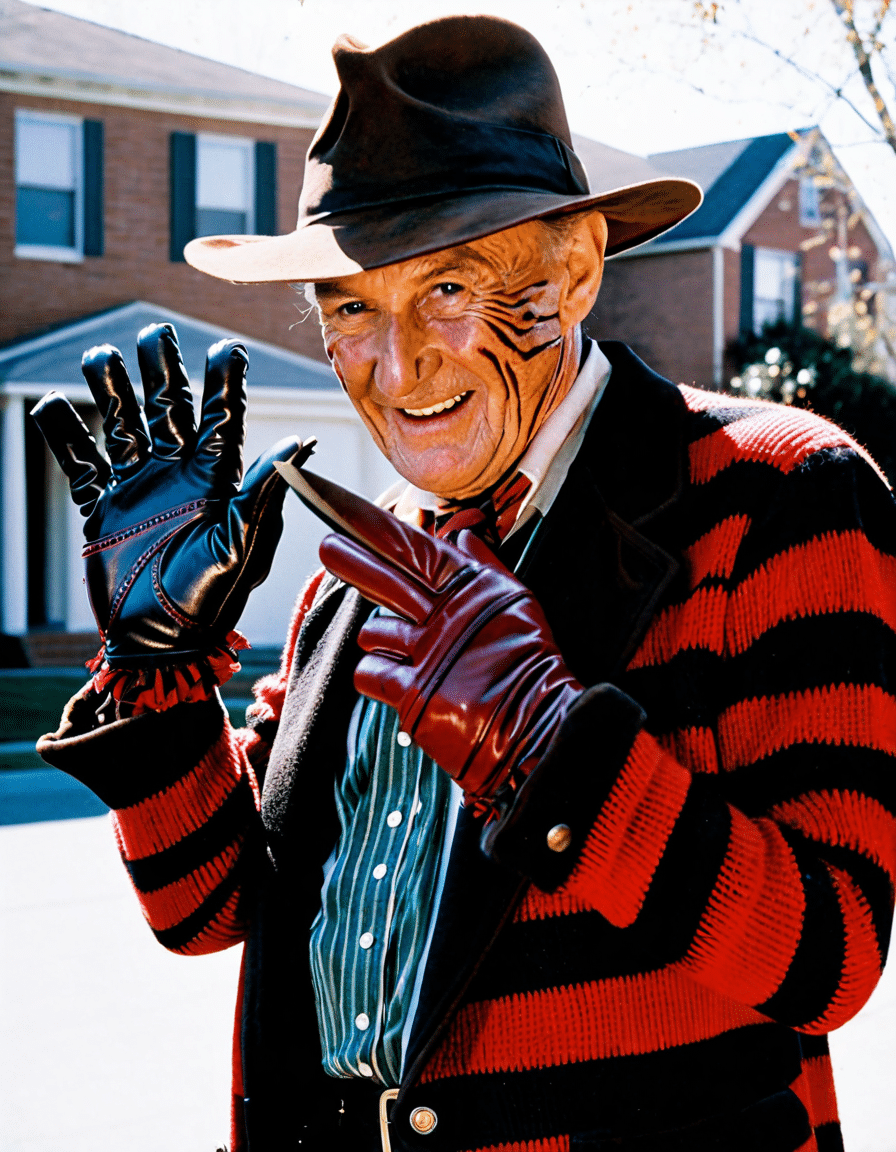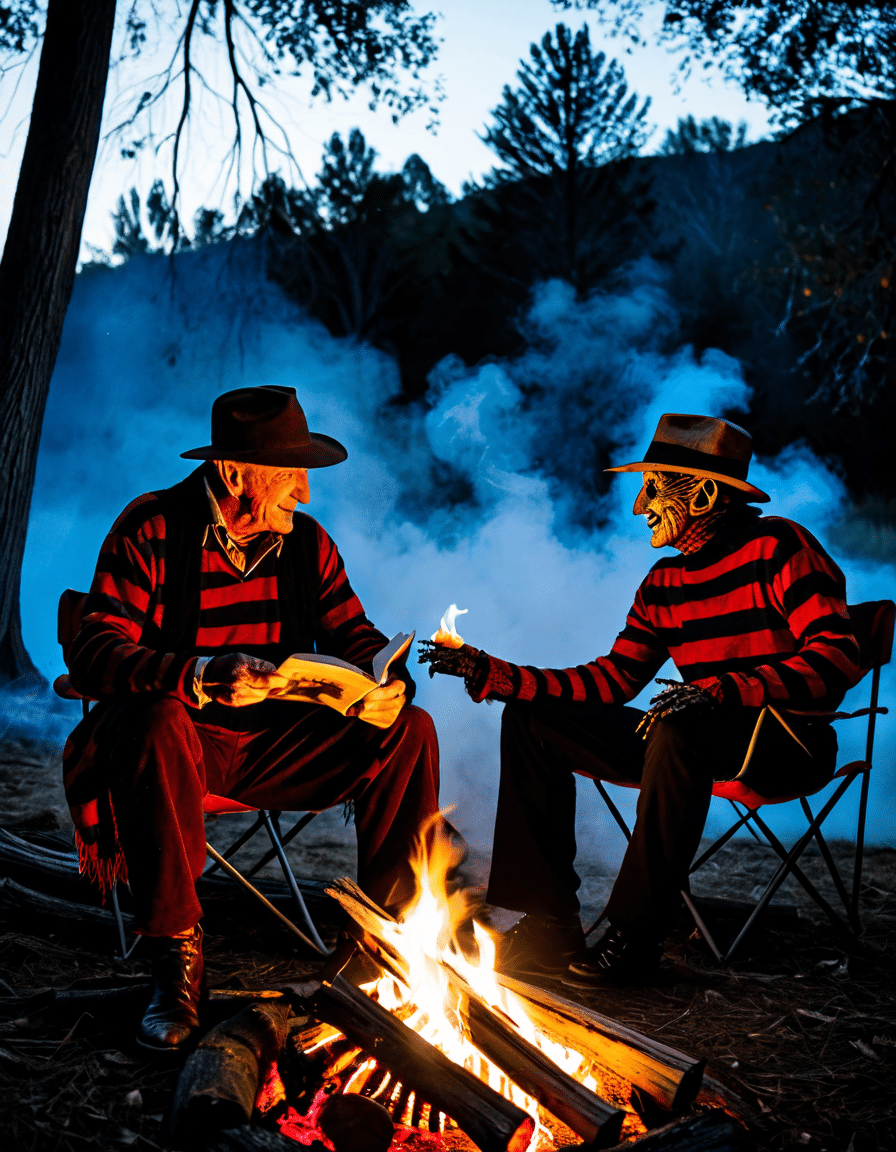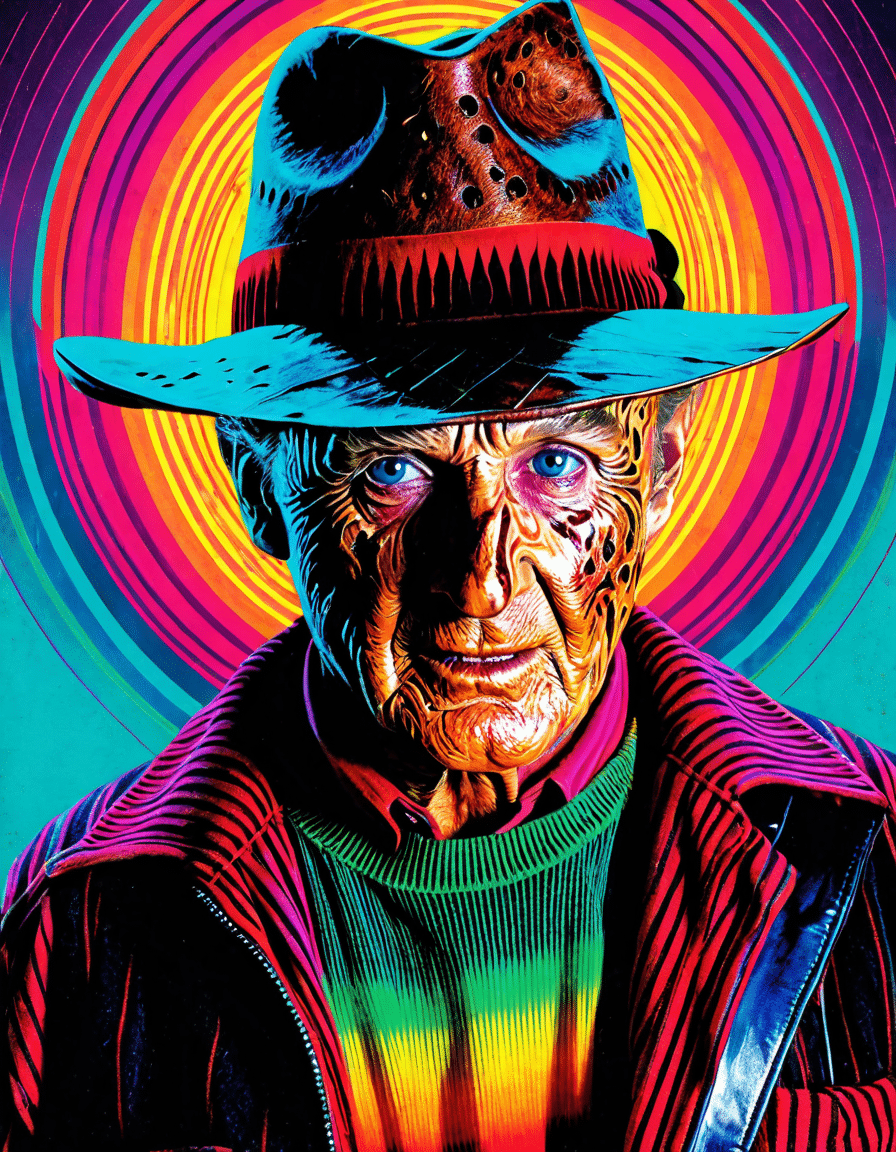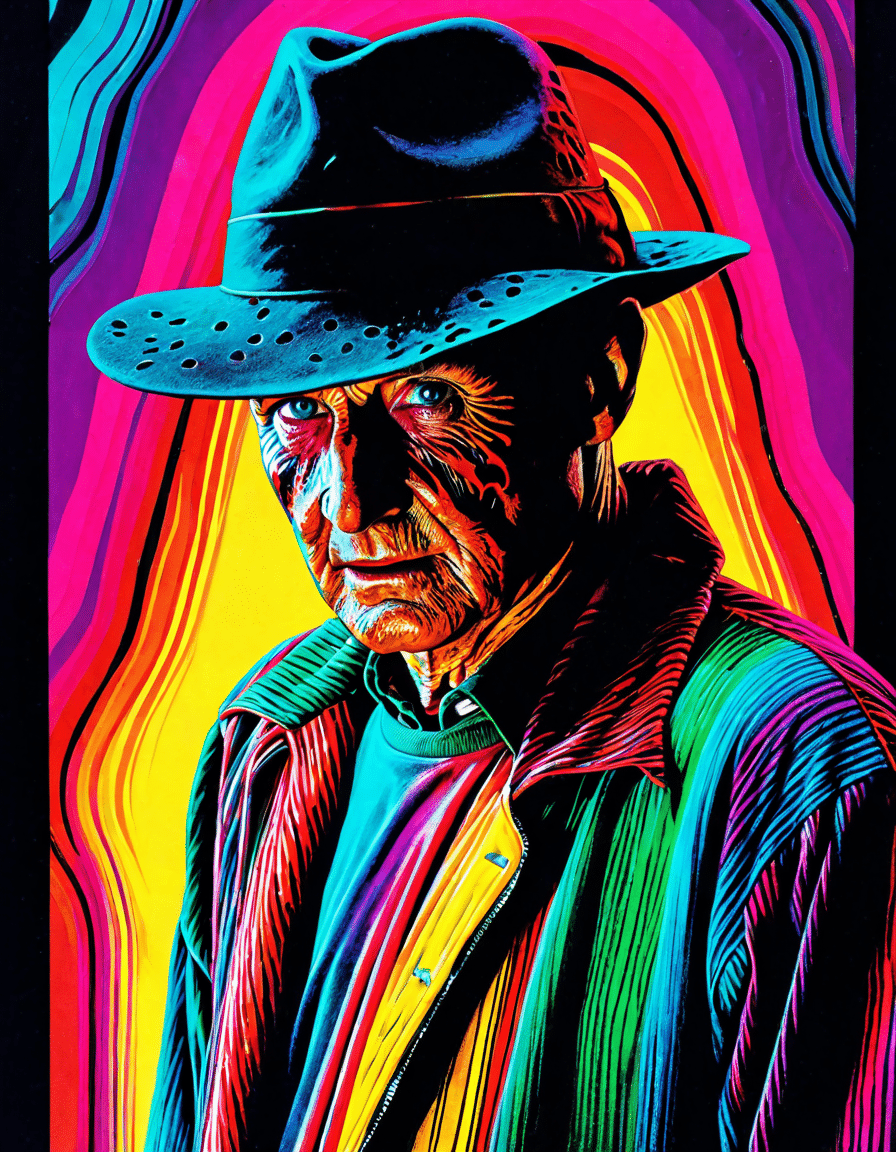
Freddy Krueger The Chilling Legacy Of A Horror Icon
In the world of horror, few figures evoke fear quite like Freddy Krueger. Since bursting onto the screen in 1984’s A Nightmare on Elm Street, Freddy has evolved from a slasher villain into a cultural icon that encapsulates society’s deepest fears. This article dives into the numerous aspects of Freddy’s legacy, demonstrating how this complex character continues to make waves in cinema and pop culture, even as we reach the mid-2020s.

7 Reasons Freddy Krueger Remains a Cultural Phenomenon
1. Innovative Concept of Dream Horror
Freddy Krueger changed the game with his haunting premise that our most terrifying experiences could unfold while we sleep. By introducing dream horror, he fundamentally altered the slasher genre’s landscape. Viewers were forced to question their own safety, realizing that sleep—something we all do—could become a living nightmare.
With each encounter, Freddy embodies the anxieties of the subconscious, manipulating dreams to turn personal fears into nightmarish realities. This distinct approach to horror strikes a chord with viewers, leaving them to ponder their own vulnerabilities as they drift off to sleep.
2. Complex Backstory
Behind Freddy’s horrific facade lies a complex narrative that makes him more than just a monster. As a child murderer, wrongfully punished and ultimately seeking vengeance against the parents of his victims, Freddy elicits a spectrum of emotions. His tragic backstory resonates deeply with audiences, inviting discussions on themes of justice and morality.
By exploring the shades of right and wrong, Krueger becomes a symbol of vengeance—a reflection of society’s often harsh judgment on crime and punishment. The duality of his character fosters a narrative that sparks conversations about the nature of evil and the quest for justice, overlapping with modern concerns around crime and punishment.
3. Iconic Visual Style
Freddy’s signature red and green striped sweater, coupled with his grotesque clawed glove, offers an unforgettable visual representation that has become synonymous with horror. These elements are not just costumes; they have morphed into cultural icons, easily recognized in across aisles of merchandise, from clothing to action figures.
This iconic imagery ensures that Freddy continues to haunt the dreams of moviegoers and pop culture enthusiasts alike. The distinct visual style plays a crucial role in establishing his eerie presence, cementing his legacy as an unshakeable figure in the horror genre.
4. Cultural Commentary
Freddy Krueger’s character serves as a lens to explore societal fears. He reflects the anxieties of the 1980s surrounding youth violence, a still pertinent issue today, while also addressing contemporary concepts like trauma, mental health, and societal neglect. Freddy’s narratives challenge audiences to confront these deeper issues instead of providing mere entertainment.
As each installment of A Nightmare on Elm Street emerged, it mirrored the changing fears of its audiences. The horror Freddy instills transcends simple scares, prompting dialogue about external societal pressures that create monsters—not just in dreams, but in our everyday lives.
5. Influence on Modern Horror Films
The legacy of Freddy Krueger resonates in today’s horror landscape, influencing films that explore psychological horror more deeply. Modern hits like The Conjuring and Hereditary showcase antagonists who, like Freddy, are not just threats but embodiments of deeper human fears—be it familial struggles or historical trauma.
This evolution in horror storytelling demonstrates how Freddy paved the way for complex villains who linger in the minds of viewers long after the credits roll. Krueger’s ability to manipulate fear at a psychological level allows modern filmmakers to experiment with horror in ways that tap into the collective consciousness, making the viewer’s experience richer and more compelling.
6. Revivals and Reboots
Freddy Krueger’s tale has seen multiple revivals, most notably the 2010 remake of A Nightmare on Elm Street. While the film received mixed reviews, it sparked a renewed interest in Freddy’s universe and generated discussions about the evolution of horror icons in cinema. This resurgence illustrates Hollywood’s fascination with revisiting established characters for new audiences.
The constant demand for fresh takes on classic horror stories showcases Freddy’s lasting appeal. Each reboot opens up the character to reinterpretation, allowing new generations to experience Freddy’s chilling charm and terrifying legacy anew.
7. Enduring Fan Base and Community
Freddy Krueger boasts an ardent fan base that thrives within dedicated communities across social media platforms. These fans celebrate every aspect of the franchise, from movie marathons to cosplay events, reinforcing Freddy’s role as a unifying figure among horror enthusiasts. The global support keeps his legacy vibrant, allowing new fans to discover his story.
This enthusiastic engagement transcends the screen, creating a culture of fandom that extends Freddy’s impact far beyond his films. Clubs, forums, and even fan-made content showcase the deep-rooted admiration for Krueger, turning fear into a shared experience that unites diverse audiences.

The Evolution of Freddy Krueger: From Slasher to Icon
As Freddy has evolved, so has the context surrounding his character. The franchise reflects not only shifts in horror portrayal but also broader trends in society’s fears. Each new interpretation generates conversations about how horror icons adapt to contemporary issues, blending nostalgia with modern scares.
The Role of Technology
In today’s digital age, Freddy has found a new home online, inspiring everything from fan films to memes and even virtual reality experiences. The character’s adaptability showcases the interplay between technology and storytelling, keeping him relevant for younger audiences.
By integrating Freddy into these new media formats, filmmakers and fans alike can explore his legend in fresh, innovative ways. This evolution proves that horror icons can remain impactful while embracing the advancements of modern technology.
Freddy Krueger and the Future of Horror
As the horror genre becomes saturated with remakes and reboots, Freddy Krueger stands as a template for resilience. The ongoing question is how filmmakers will continue to reinvent his character while honoring his legacy. Emerging technologies such as AI and virtual reality storytelling offer exciting possibilities for evolving Freddy’s story.
By engaging with the depths of humanity’s fears and emotions, Freddy Krueger’s legacy is far from over. He embodies the notion that the terror we experience in our dreams may inspire endless interpretations and critical commentary. With each passing generation, Freddy stays a relevant figure, ready to terrify audiences for years to come.
In conclusion, Freddy Krueger’s chilling legacy is a testament to the power of horror to reflect societal anxieties. From his complex character to his terrifying impact across the film industry, Freddy continues to evoke a sense of dread that resonates even today. As fans engage with his narrative, both old and new, Freddy Krueger proves that the monsters that haunt our dreams can teach us much about our fears—and about ourselves.
Freddy Krueger: Fun Trivia and Interesting Facts
Origins of an Iconic Villain
Did you know that Freddy Krueger wasn’t always the dream-haunting figure we know today? Originally, director Wes Craven envisioned him as a more sympathetic character, but the concept shifted over time. It’s crazy how a horror villain can evolve, isn’t it? Freddy’s signature striped sweater and fedora became iconic thanks to simple design choices, much like how movie aesthetics can influence streaming success, similar to the best streaming Movies right now.
One popular legend says that the character was inspired by real-life events involving a childhood bully. This blend of real fear and creative storytelling is a hallmark of successful horror, echoing how audiences crave authenticity and connection, much like fans of shows like Moon Girl And Devil dinosaur.
Impact on Pop Culture
Freddy Krueger made such an impression that he’s crossed paths with other film genres, even leading to parodies and references in shows. It’s fascinating how characters can transcend their own narratives. His influence is apparent across various pop culture platforms, somewhat like how the Rings Of Power season 3 enjoys a loyal following thanks to its source material’s rich legacy.
In the 1980s, Freddy’s presence also affected fashion, sparking trends that mirrored his sinister style. Ever tried to find a quirky camisole inspired by horror icons? Talk about a niche market! His impact stretched beyond horror, opening doors for creative expression in fashion and art, akin to how Emilie Ullerup has carved out her own space in the industry, appealing to diverse audiences with her performances emilie ullerup.
Freddy’s Global Footprint
Freddy’s popularity isn’t confined to American audiences. International adaptations and campaigns have helped cement his status as a global horror icon. Interestingly, fans often debate who’d win in hypothetical showdowns, like pondering the Goku power level in crossover battles, showcasing how horror and action genres often intertwine in imaginative fan theories.
Lastly, it’s worth noting that Freddy Krueger’s story even influences the design of various haunted attractions in places like Las Vegas, where the thrill of fear meets entertainment. Seeking cheap Vegas Hotels can lead to some jaw-dropping experiences for horror lovers as they step into worlds conjured by their favorite terrifying characters! Exploring these venues adds an extra dose of fun and fright to a weekend getaway, don’t you think?










